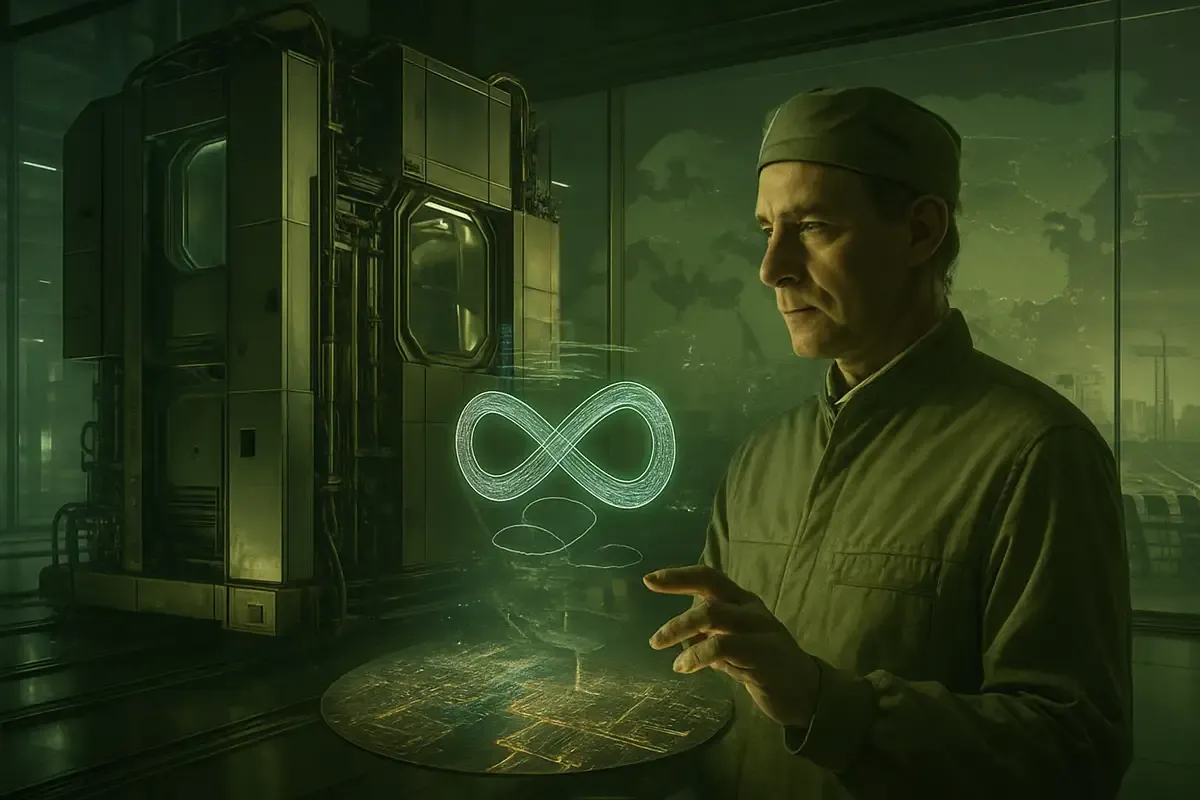ASML Holding appointed Marco Pieters as chief technology officer on Thursday, ending an 18-month vacancy at the only company that can make the machines required for advanced AI chips. The timing matters: Europe's most valuable tech firm is racing to expand production capacity while navigating export restrictions that block access to China, its historically largest market.
Pieters, 49, has been at ASML for a quarter century, most recently leading Applications—the division that drives precision and resolution gains. He's stepping into Martin van den Brink's former role. Van den Brink retired in April 2024 after 41 years. During the 1980s and 1990s, Van den Brink backed technical bets that let ASML overtake Nikon and Canon in lithography. Those calls created dominance. That dominance now means ASML controls the chokepoint for every advanced semiconductor produced anywhere.
Come April 2026, shareholders will formally add Pieters to a board that's expanding from five to six members. Roger Dassen stays as CFO, Frédéric Schneider-Maunoury as COO. A sixth seat isn't routine housekeeping. It's preparation for juggling physical expansion, AI tool deployment, and export rules that erase billions in addressable market.
Key Takeaways
• ASML appointed Marco Pieters as CTO after 18-month vacancy, expanding board from five to six members by April 2026
• Eindhoven expansion targeting 20,000 employees needs €4.1 billion infrastructure investment but lacks power and planning permission until 2026
• Export restrictions bar EUV machine shipments to China while ASML stock surges 43% on AI infrastructure demand
• ASML holds sole-supplier status for machines enabling all advanced AI chips, creating systemic dependency across ecosystem
What's actually new
ASML operated without a permanent CTO since Van den Brink left. That's an 18-month gap at a company where technology leadership determines whether customers can build the next generation of chips—and whether AI companies can build the infrastructure their roadmaps require. The vacancy stretched through a period when hyperscalers committed hundreds of billions to data centers that depend entirely on chip capacity that depends entirely on ASML's machines.
Pieters' mandate includes deploying AI tools to improve software and scanning performance in ASML's lithography systems. That follows the company's €1.3 billion investment in French startup Mistral AI announced September 2024, making ASML Mistral's largest shareholder. The pitch: use AI to make the machines that make AI possible. It's recursive. It's also necessary—ASML's extreme ultraviolet systems already rank among the most complex tools humans manufacture, with individual units costing up to $400 million.
The board expansion is unusual for a company ASML's size and suggests scope. More executive oversight, more specialized leadership, more governance capacity for simultaneous strategic bets. That's not a signal things are running smoothly—it's preparation for simultaneous execution under pressure.
The lithography chokepoint
ASML holds a technological monopoly in extreme ultraviolet lithography—the process that etches circuitry onto silicon at nanometer scale. Current leading-edge chips use 3-nanometer spacing between electrical traces. Two-nanometer variants launch this year. DNA is 2.5 nanometers wide. The precision is beyond what any other company has achieved.
Without EUV machines, foundries like Taiwan Semiconductor Manufacturing and Intel can't produce the chips that power AI training and inference. No chips means no Nvidia GPUs. No Nvidia GPUs means OpenAI, Anthropic, Google, and Meta can't build the models driving the AI boom. The dependency chain is absolute.
"Without the ASML machines, the further development of AI will slow down," Jeroen Dijsselbloem told Bloomberg. He runs Eindhoven as mayor after serving as Dutch finance minister. ASML's Veldhoven headquarters sits adjacent to the city and employs 20,000 people. That's structural reality, not promotional language. ASML is the sole supplier of the critical path. There are no alternatives. Developing one would require years of research and billions in capital. The moat is technical, not just commercial.
Customers are placing orders based on AI infrastructure buildouts that stretch through the decade. ASML expects revenue between €44 billion and €60 billion by 2030. That's up from €32 billion over the trailing twelve months. Growth requires foundries expanding capacity. Foundry expansion requires hyperscalers committing capital. Hyperscaler commitments require AI staying mission-critical. It's a chain of dependencies. ASML sits at the center.
Succession under strategic pressure
Van den Brink joined in 1984. Four decades shaping ASML's technological and strategic trajectory. His decisions let ASML dominate a market Japanese giants controlled. Replacing that institutional knowledge isn't straightforward, particularly when stakes include maintaining technological leadership during the largest demand surge in ASML's history.
Pieters represents internal continuity—deep experience in Applications where precision improvements drive competitive advantage. CEO Christophe Fouquet, who took over from Peter Wennink last year, emphasized succession planning and confidence in Pieters' ability to drive the technology roadmap. That's the public message. The reality is trickier: Pieters inherits a role defined by a predecessor who shaped ASML's trajectory for four decades, and he inherits it during a period when execution risk has never been higher.
The AI integration mandate adds complexity. Pieters must deploy AI tools to improve machine performance while simultaneously overseeing the core lithography innovation that maintains ASML's monopoly. That's two strategic priorities requiring specialized focus, happening while the company attempts the largest physical expansion in its history.
The expansion bind
North of Eindhoven, ASML is carving out 100 hectares for expansion. The plan calls for space to house another 20,000 employees. The project needs €4.1 billion in infrastructure investment—two-thirds from national government, one-third from companies and 21 municipalities. The site currently has no electrical power. The municipality is working to ensure electricity by 2028, when the first phase completes. Planning permission? Still pending. Not expected until 2026.
Eindhoven's labor market is already stretched. Companies across the region need roughly 40,000 skilled workers over the next decade. Chip manufacturing doesn't run on warm bodies you can train up in six months. Lithography demands specialized expertise—metrology, precision engineering, optical physics. ASML already depends heavily on foreign labor. Immigration has become one of the most contentious issues in Dutch politics.
Here's the political timeline. Geert Wilders' PVV won the November 2023 election. The Schoof cabinet took power July 2024. Eleven months later, it collapsed. New elections land October 29. Recent polls show PVV at or near the top. The race is close. The expansion needs housing, transport infrastructure, and a workforce pipeline. None of those have guaranteed solutions.
Export restrictions add another layer of pressure. ASML can't ship EUV machines to China. That blocks access to one of the world's largest semiconductor markets. Chinese firms are pivoting to domestic deep-ultraviolet alternatives where they can, but the advanced chips powering AI require EUV. The restrictions shrink ASML's addressable market precisely when demand from other regions surges. The company's stock is up 43% year-to-date, outperforming the Nasdaq 100's 20% gain, driven by soaring AI infrastructure commitments. Geopolitical constraints cap upside in ways pure technology leadership can't overcome.
What to watch next
Three indicators will show whether this succession supports or hinders ASML's strategic execution. First, AI deployment progress: whether Mistral's tools measurably improve machine performance within 12-18 months. Second, Eindhoven expansion milestones: planning approvals, electricity infrastructure completion, workforce recruitment against timeline. Third, customer capacity commitments: whether foundries place orders reflecting confidence in ASML's ability to deliver at scale through the decade.
Pieters' track record in Applications suggests technical credibility. His challenge is executing on multiple strategic priorities simultaneously—AI integration, manufacturing innovation, expansion oversight, and geopolitical navigation—while filling shoes left by a 41-year veteran whose decisions defined ASML's competitive position. The board expansion provides more governance capacity. Governance doesn't build machines or train workforces.
ASML's monopoly creates leverage with customers and systemic risk for everyone else. If ASML can't scale production to meet AI infrastructure demand, the entire stack slows. If Eindhoven expansion hits delays, chip capacity constrains model development. If export restrictions tighten further, addressable markets shrink. The company sits at the center of dependencies it didn't create but must now navigate.
Why this matters:
• ASML's execution directly determines AI infrastructure capacity through the decade—there is no alternative supplier for the machines that make advanced chips possible.
• Leadership transitions during monopoly positions create systemic risk: succession must maintain both technological innovation and operational scaling when the entire ecosystem depends on continuous supply.
⏱️
Miss one day. Miss everything.
AI waits for no one. We'll keep you caught up.
❓ Frequently Asked Questions
Q: Why can't other companies make EUV lithography machines?
A: EUV requires etching circuits at 2-3 nanometer precision using extreme ultraviolet light—roughly the width of DNA. Developing this technology took ASML decades of research and billions in R&D investment starting in the 2000s. Former rivals Nikon and Canon couldn't match the technical complexity. Building a competing system would require years of research and capital most companies can't justify.
Q: How much does an EUV machine cost and how many does ASML sell?
A: Individual EUV systems cost up to $400 million each. ASML generated €32 billion in revenue over the trailing twelve months and expects €44 billion to €60 billion by 2030. The company doesn't disclose exact unit sales, but growth depends on foundries like TSMC and Intel ordering machines to expand chip production capacity for AI infrastructure.
Q: What does the Applications division actually do?
A: Applications focuses on improving the precision and resolution of ASML's lithography machines—essentially making them etch finer patterns more accurately. Pieters spent his career there working on what the company calls "Holistic Lithography," which optimizes how light interacts with silicon to achieve nanometer-scale accuracy. It's where competitive advantage gets built through incremental technical gains.
Q: Why did ASML invest €1.3 billion in Mistral AI?
A: ASML wants to use AI tools to improve its own manufacturing processes—specifically optimizing software and scanning technology in lithography machines. The investment makes ASML Mistral's largest shareholder and gives it access to AI models that could enhance machine performance. It's recursive: using AI to build better machines that make better AI chips.
Q: Why expand in Eindhoven instead of relocating where labor and permits are easier?
A: ASML's competitive advantage depends on an ecosystem of hundreds of specialized suppliers within the Eindhoven region. Moving would break supplier relationships built over decades and force retraining thousands of workers with rare expertise. The technical complexity of EUV systems requires this supplier density—equipment this precise can't be built in isolation.








